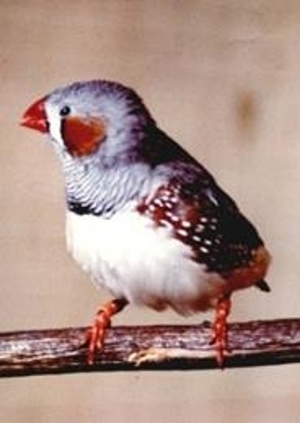Research project
Segments and rules: a comparative study on linguistic rule learning mechanisms
A central and much debated topic in the study of language acquisition concerns the nature of the learning mechanisms that are required. Are the computational and learning mechanisms that guide learning about language structure special and specific to language or humans?
- Duration
- 2012 - 2017
- Contact
- Carel ten Cate
- Funding
-
 NWO – GW
NWO – GW
- Partners

A central and much debated topic in the study of language acquisition concerns the nature of the learning mechanisms that are required. Are the computational and learning mechanisms that guide learning about language structure special and specific to language or humans? This question also relates to language evolution: why did language only evolve in humans, and what might have been language precursors? If general mechanisms are involved in acquiring language, then it is expected that non-human animals should also be able to learn at least some of the rules that emulate the structure of language. But can they? If so, we need to find out what types of rules can be learned by which species.
The views on these questions diverge strongly. One hypothesis is that language acquisition relies on a distributional learning mechanism that is modality, domain, and species general. From this view, it follows that comparative studies with non-human animals can provide valuable insights in the evolutionary origins and mechanisms critical to language learning. This contrast with the view that language can only be acquired by language-specific mechanisms and the concomitant opinion that comparative studies have thus far failed to show strong evidence in non-human animals of learning and processing mechanisms relevant to language learning.
The focus of this project is on the perceptual and linguistic rule learning abilities of birds and humans. This is done by experiments using ‘artificial grammar learning’ (AGL) to assess what types of patterns or grammar rules birds (zebra finches and budgerigars), human infants and adults can detect in artificially prepared string sets. The results of these experimental studies are related to computational models that examine how various factors (biases, computational constraints, memory limitations) affect learning.
This project is supported by an NWO-GW grant to Carel ten Cate (IBL), Claartje Levelt and Willem (Jelle) Zuidema and involves three PhD students (Michelle Spierings (bird studies - IBL), Andreea Geambasu (human studies - LUCL) and Raquel Alhama (computational models - ILLC).
- Spierings, M.J. & ten Cate, C. 2016. Zebra Finches As a Model Species to Understand the Roots of Rhythm. Frontiers In Neuroscience 10: 354.
- Spierings, M.J. & ten Cate, C. 2016. Budgerigars and zebra finches differ in how they generalize in an artificial grammar learning experiment. Proceedings of the National Academy of Sciences USA 113: E3977-E3984.
- Kriengwatana, B., Spierings, M.J. & ten Cate, C. 2016. Auditory discrimination learning in zebra finches: effects of sex, early life conditions and stimulus characteristics. Animal Behaviour 116:99-112.
- ten Cate, C., Spierings, M.J., Hubert, J. & Honing, H.2016. Can Birds Perceive Rhythmic Patterns? A Review and Experiments on a Songbird and a Parrot Species. Frontiers In Psychology 7:730.
- Spierings, M.J. & ten Cate, C. 2016. Rule Learning In Birds: Zebra Finches Generalize By Positional Similarities, Budgerigars By The Structural Rules. In S.G. Roberts, C. Cuskley, L. McCrohon, L. Barceló-Coblijn, O. Fehér & T. Verhoef (eds.) The Evolution of Language: Proceedings of the 11th International Conference (EVOLANG11) doi:10.17617/2.2248195.
- Geambasu, A., Spierings, M.J., ten Cate, C. & Levelt, C.C. 2016. Effects Of Task-specific Variables On Auditory Artificial Grammar Learning And Generalization. In S.G. Roberts, C. Cuskley, L. McCrohon, L. Barceló-Coblijn, O. Fehér & T. Verhoef (eds.) The Evolution of Language: Proceedings of the 11th International Conference (EVOLANG11) doi:10.17617/2.2248195.
- Spierings, M., de Weger, A. & ten Cate, C. 2015. Pauses enhance chunk recognition in song element strings by zebra finches. Animal Cognition 18: 867-874.
- Spierings, M.J. & ten Cate, C. 2014. Zebra finches are sensitive to prosodic features of human speech. Proceedings of the Royal Society London B. 281: 20140480.
- Spierings, M.J. & ten Cate, C. 2014. Prosodic cue weighting by zebra finches. In: The Evolution of Language (Ed. By E.A. Cartmill, S. Roberts, H. Lyn, H. Cornish). World Scientific pp.519-520.
- Geambasu, A., Levelt, C.C., Spierings, M. & ten Cate, C. 2014. Artificial grammar learning in infants, adults and songbirds: what is shared, what is learned? In: The Evolution of Language (Ed. By E.A. Cartmill, S. Roberts, H. Lyn, H. Cornish). World Scientific pp.443-444.
